Mathematics 173 -- Applied Mathematics 1
A First Boundary Value Problem
We consider the series solution for the BVP:
![]()
![]()
![]() ,
,
![]()
First we check our computation of the Fourier coefficients for
the initial temperature distribution function:
> restart;
> f := x -> x*(L - x);
![]()
> assume(m,integer):
> d := m -> (2/L)*int(f(x)*sin(m*Pi*x/L),x=0..L);
![[Maple Math]](images/Fourier6.gif)
> d(m);
![[Maple Math]](images/Fourier7.gif)
We expect that the series
![[Maple Math]](images/Fourier8.gif) should converge to
should converge to
![]() for
x
in [0,
L
].
for
x
in [0,
L
].
Let's check this "experimentally". We will define a function of k and x which gives
the k th partial sum of the Fourier series:
> s := (k,x) -> sum(d(n)*sin(n*Pi*x/L),n=1..k);
![[Maple Math]](images/Fourier10.gif)
To plot these partial sum functions and compare with
![]() , we will take
, we will take
> L := 5;
![]()
> plot({f(x),s(1,x)},x=0..L);
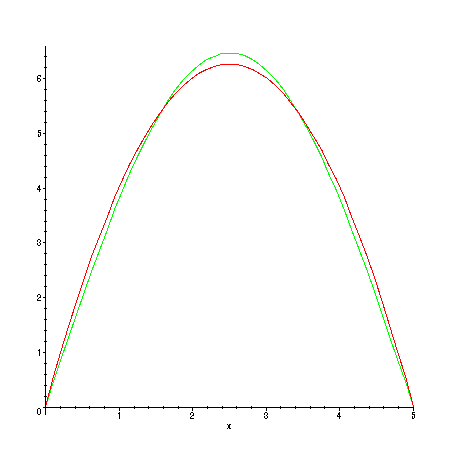
We get close agreement already with
![]() -- the largest difference is about 0.4
.
-- the largest difference is about 0.4
.
For larger k , the agreement gets even better:
> plot(f(x) - s(50,x),x=0..L);
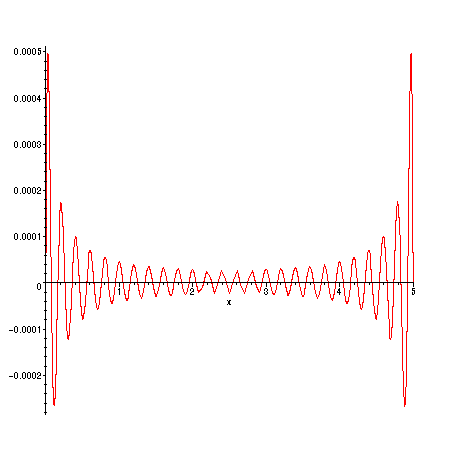
Next, we will study the corresponding solution of the heat equation obtained as
![[Maple Math]](images/Fourier16.gif)
We take:
> k:=0.1;
![]()
Once again, to plot, we will need to compute partial sums of this series. Since
the exponential factors go to zero rapidly as n increases (for t > 0 ), we will
only use a few terms of the series for u (adding in more terms changes the results
very little).
> u := (x,t) -> sum(d(n)*exp(-k*(n*Pi/L)^2*t)*sin(n*Pi*x/L),n=1..3);
![[Maple Math]](images/Fourier18.gif)
> plot3d(u(x,t),x=0..L,t=0..50,axes=BOXED);
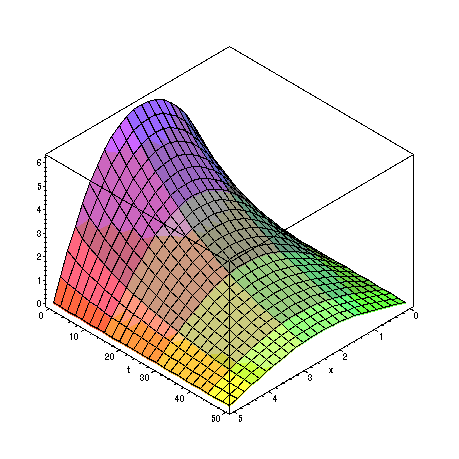
The slices of this plot in the planes t = const. give the temperature functions at each time.
For instance, the slice
![]() shows the initial temperature
shows the initial temperature
![]() .
.
Note that as t increases, the temperature at all points of the rod is tending toward zero.
Is this what we expect?
Here is a second example showing an initial temperature distribution showing a
sharp "spike" of heat at one point in the rod. For the previous calculation, we actually
let Maple do all computations of the Fourier coefficients by symbolic methods (getting
exact formulas as we would using integration by parts. For the following initial temperature
function, this would be impractical. Hence we do all the computations to yield numerical
approximations.
> f2:=x->10*exp(-100*(x-2)^2);
![]()
> plot(f2(x),x=0..L);
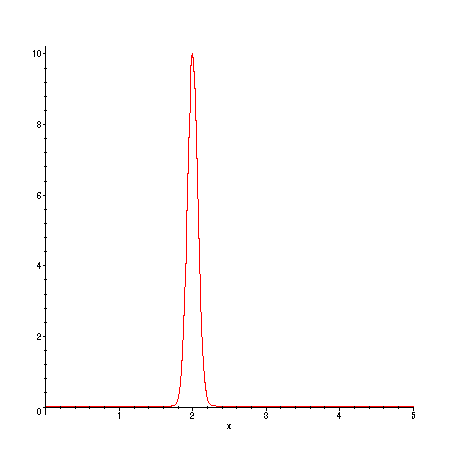
First the Fourier series for f2:
> d2 := n -> evalf((2/L)*Int(f2(x)*sin(n*Pi*x/L),x=0..L));
![[Maple Math]](images/Fourier24.gif)
> s2:=(k,x) -> add(d2(n)*sin(n*Pi*x/L),n=1..k);
Warning, `n` in call to `add` is not local
![]()
For this function, we need more terms in the Fourier series before we start to
see good agreement with the function!
> plot({f2(x),s2(50,x)},x=0..L);
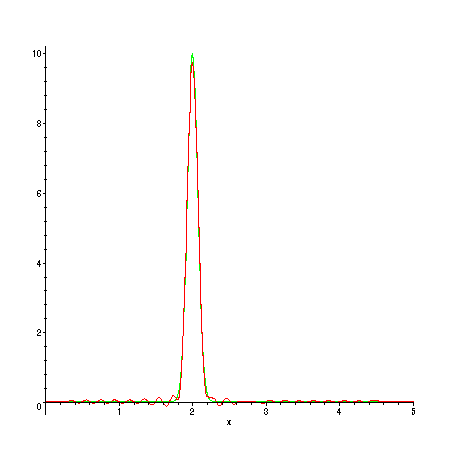
The corresponding solution of the heat equation:
> u2 := (x,t) -> add(d2(n)*exp(-k*(n*Pi/L)^2*t)*sin(n*Pi*x/L),n=1..50);
Warning, `n` in call to `add` is not local
![[Maple Math]](images/Fourier27.gif)
> plot3d(u2(x,t),x=0..L,t=0..10,axes=BOXED);
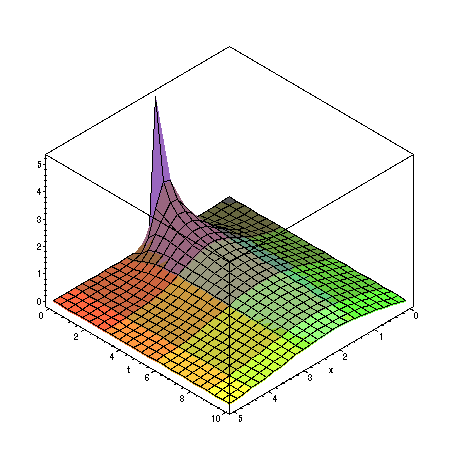
Again, does this look like what we expect? Another way to visualize the passage of time:
> with(plots):
> animate(u2(x,t),x=0..L,t=0..10,frames=50,numpoints=200);
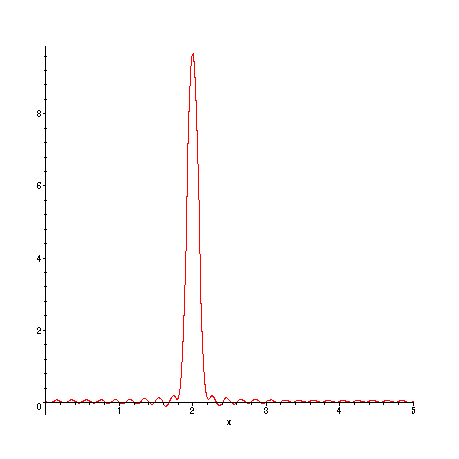
>